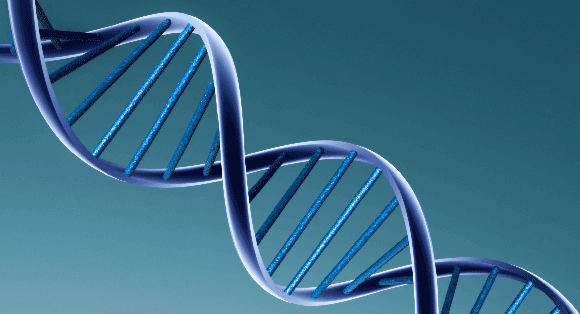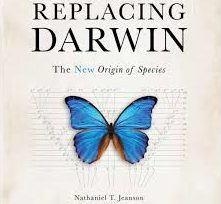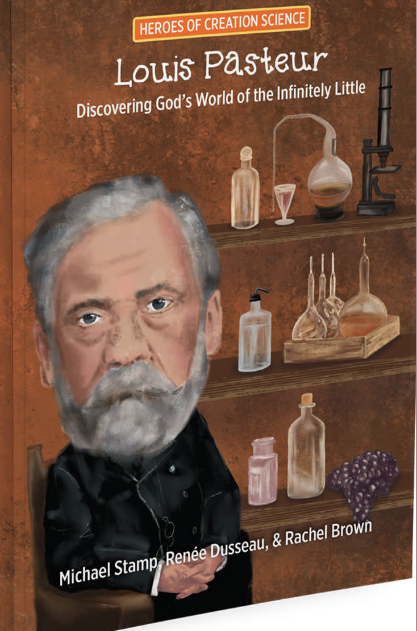Articles » Genetics
Recently scientists finished the detailed study of each human chromosome. The whole effort, begun in the 1980s, ended when the analysis of human chromosome number 1 was published on May 18, 2006. Since each of these strings of chemical code or genetic information is so different, allow me then to introduce you to some of your own chromosomes. Read the rest of this entry »
An avid fan of spy stories, I have read many which involve an apparently harmless document (like a friendly letter). But the document actually conveys dangerous information if one is provided with the appropriate convention for decoding it. Read the rest of this entry »
CSAA’s featured speaker for Creation Weekend 2011 was well known creation apologist Dr. Jerry Bergman. Large numbers of people came to hear one or more of his lectures and all declared themselves delighted with his genial, non-confrontational manner and his interesting material. In that Dr. Bergman’s area of expertise is biology, chemistry and medical anatomy, the issues he discussed were quite different from the geological topics which we have considered in recent years. This material demonstrated anew that the issue of creation is broad and encompasses all aspects of nature. Read the rest of this entry »
If bats were prettier to look at, we might appreciate their amazing talents more. The fact is that bats exhibit some astonishing design features which our engineers and technologists really envy. Traditionally scientists have grouped bats according to their food preferences. There are the fruit bats with good eyesight, the insect consuming, echolocating bats and the vampire or blood consuming bats. Further research has revealed how amazingly these animals are designed for their life styles. Such studies have also revealed that the old fashioned ways of categorizing the creatures according to lifestyle and physical appearance do not really work. This has had some serious implications for ideas concerning whether Darwinian evolution could ever work or not. Read the rest of this entry »
Sometimes it seems as if information is the most important commodity in our technological age. Information, of course, can be put to good or bad uses. We would all agree, no doubt, that computer viruses are a bad use of information. In that situation, a small piece of computer code (information), once it is inside your computer, can take over the whole operating system, with disastrous results for your interests. Of course such problems are nothing new. The term “virus” comes from natural phenomena that do the very same thing to living cells. Invading information occurs to even the smallest cells, bacteria. In fact, some of the bacteria that most threaten our health, are themselves the victims of invasive information from outside unrelated sources. Consider the case of the infamous Escherischia coli 0157:H7, cause of potentially fatal hamburger disease and in some isolated situations, contaminated water. Read the rest of this entry »
The experiment with fruit flies was basically uncomplicated. Any university student could have carried it out providing they could identify and count the various mutant forms. But there was more to the issue than mere counts of fruit fly offspring. The study was supposed to, and had long been considered that it in fact did, support a key idea of Charles Darwin. More than sixty years had passed since the fruit fly work was published. Subsequent to publication in the new journal Heredity in 1948, few people paid much attention to the study until it was quoted favourably in 1972 and 1994 as supporting Darwin’s idea of sexual selection. Those references conferred celebrity status on the work and many citations followed. But then in 2012 a study was published which questioned not only the 1948 work, but also a major component of Darwin’s theory of evolution. However the reasons and issues surrounding the new study are not what we might hope or expect. It is important to remember that scientists draw conclusions in keeping with their world view and there is more diversity in world views in science than one might imagine.
It was in April 1953 that Frances Crick and James Watson published their proposed description of the DNA molecule. As they anticipated, biology was forever changed. Now biologists had a molecule which they could study, which stored hereditary information. The 1960s saw the emergence of the ‘standard model,’ which held that DNA codes for proteins which determine the characteristics of each creature. However on the occasion of the 60th anniversary, one commentator in the journal Nature declared: “We do not know what most of our DNA does, nor how, or to what extent it governs traits.” (496 #7446 p. 419). Read the rest of this entry »
Dr. Paul Nelson is a prominent spokesperson for the creation and intelligent design communities. It was in that capacity that he introduced enthusiastic participants at the 2013 Creation Weekend in Edmonton, to new arguments and exciting information. Read the rest of this entry »
Review of Evolution’s Achilles’ Heels (book)
Like Alice of Wonderland fame (in Through the Looking Glass), who found that she had to run extremely fast just to stay in the same place, so also it is hard to maintain an up-to-date understanding in science. The scientific journals constantly churn out new articles with new information and arguments. Keeping up to date is hard work! But it is extremely helpful to have an understanding of current issues in science and their significance. This makes the new book Evolution’s Achilles’ Heels (Robert Carter, Editor) and its companion DVD of the same title, extremely relevant. Read the rest of this entry »
We hear all the time about how complicated living cells are. It makes us think that such entities were designed to work as they do. People who support the idea that all things came about by natural processes, however, do not want to think that there is a mind behind what we see in all living creatures from microbes up to the largest, most complicated organisms. These latter people want to show how the living cell developed spontaneously, without any direction. So they want to demonstrate that there were early cells which were much much simpler than what we see today, cells that could have appeared through natural processes. These scientists want to demonstrate that the barriers to spontaneous development are not too high. Read the rest of this entry »
Dr. John Baumgardner addressed large appreciative crowds at CSAA’s Creation Weekend in October 2016. Following his introductory lecture on Friday evening (“How language powerfully affirms God’s reality”) [described in the previous issue of Dialogue], he continued the next morning with “Mendel’s Accountant: Why Darwinism Fails”. This work resulted from a collaboration with geneticist Dr. John Sandford of Cornell University. Many people in modern society find Darwin’s conclusions extremely appealing: the idea that competition in nature ought to lead to organisms better suited to the environment. While this is reasonable, there are limits to how far this idea can take us. Read the rest of this entry »
Landmark Work: What’s Wrong with ‘Survival of the Fittest’
An exciting new book was published in the fall of 2017. The author, Nathaniel Jeanson, is a specialist in molecular biology and bioinformatics with a Ph.D. in cell and developmental biology from Harvard University. With such fancy credentials, one might expect his new book to be very difficult and full of technical mumbo-jumbo! Well, Dr. Jeanson does present some very interesting information, but he does undertake to make the discussion accessible to interested readers. Excellent illustrations (some in colour) really help. Nevertheless for reading this book a good background in high school biology at least would be a big help. Read the rest of this entry »
Order OnlineMargaret Helder has developed a guide to enhance the learning opportunities and appreciation of the message in her book (which is to encourage everyone to critically evaluate scientific pronouncements). For each chapter there is a brief overview statement. Brief paragraphs follow for each subsection in each chapter with key concepts introduced. There follows for each chapter a list of questions, many of them involving the key concepts. The next section provides detailed answers for each question. A sure to be popular section follows on resources. These are provided under topical headings. Books, articles (all obtainable) and especially video clips on-line, are certain to be useful for any biological studies, not just for this book. Lastly for each chapter, a section on extension is provided. This booklet of about 60 pages, will be available on line (free download) and in hard copy. Inquire through our website for your copy as soon as it is available.
Genetic information is so detailed that questions often arise as to where it came from. Genes may either be homologues to genes in other species (similar in composition to genes in other organisms and assumed to have originated from a common source), or they may be entirely different. These different genes are called orphan genes. Orphan genes (often spelled ORFan genes) are species specific genes that are significantly different from all other known genes, and are thus genetically isolated from the enormous set of genetic possibilities. Read the rest of this entry »
While we may be aware of wonderful living creatures, we seldom reflect on the blessings of the material world. But the apostle Paul, way back in New Testament times in Lystra, assured his pagan audience that God provides favourable natural conditions to draw attention to himself. While God uses material blessings to draw attention to himself, some people wonder whether evolution can be included under the umbrella of God’s providential design. Since evolution is by definition a process that involves only matter and energy, then the evolutionary process can never involve foresight or design which are non-material. When we look at life however, we see features which demonstrate intelligent purpose and planning, thereby pointing to the work of God. Read the rest of this entry »














